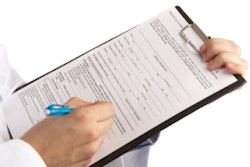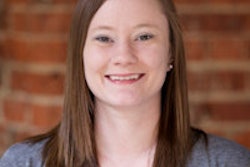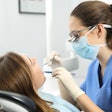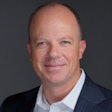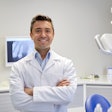
Dentistry is moving into the 21st century without an essential piece of healthcare technology, some say: a commonly accepted, standardized system of diagnostic terms.
"We're behind medicine by a lot," said Joel White, DDS, MS, an applied dental scientist and professor at the University of California, San Francisco School of Dentistry. "Back in the days of the bubonic plague, medicine captured why people die. We don't capture why teeth die. We're centuries behind."
Dr. White is also a member of an international academic work group that sees its mission as catching dentistry up with the times. And to that end, the team has come up with the EZCodes Dental Diagnostic Terminology, a system of 1,358 terms organized into 91 subcategories under 15 major headings, such as Abnormalities of Teeth and Temporomandibular Disorders.
The vocabulary of diagnostic terminology could help dentists in providing care for patients and tracking clinical outcomes, according to Dr. White and other members of the work group. And on a larger scale, they point out, the diagnostic data collected could help researchers, health officials, administrators, and policymakers to map disease patterns, report on community oral health status, and identify high-need groups and best practices.
With the proliferation of electronic health records (EHRs) and a growing emphasis upon accountability in healthcare, diagnostic coding will become increasingly important, they noted.
The EZCodes project, which began in 2009 and has received funding from the National Library of Medicine and the National Institute of Dental and Craniofacial Research, was catalyzed by the Consortium for Oral Health Research and Informatics, a collaboration of dental professionals dedicated to standardizing and integrating data using EHRs and promoting evidence-based dentistry. EZCodes are currently being piloted in 17 dental schools and institutions located in the U.S. and Europe.
A paradigm shift
While procedure or treatment codes have long been used in dentistry for billing purposes and for keeping patient records, the EZCodes system serves a different need and represents a different way of looking at patient care, according to Elsbeth Kalenderian, DDS, MPH, chair of oral health policy and epidemiology at the Harvard School of Dental Medicine, and the mastermind behind the EZCodes system.
"It's a move from treatment-centric to diagnostic-centric," Dr. Kalenderian told dentists and researchers, community health providers, and insurance company representatives who gathered for an inaugural EZCodes conference held November 28 at the Harvard School of Dental Medicine.
"We need to be diagnostic-centric. Once we really implement our diagnostic charts, we are really understanding how the patient is doing. We can really think about evidence-based care. We can think about reporting the data consistently and determining cost-effectiveness and efficiencies," Dr. Kalenderian said.
The EZCode system is evolving because other efforts to standardize dental diagnostic terms have failed to gain wide usage, members of the work group said.
The International Classification of Disease (ICD) coding system, which is copyrighted and maintained by the World Health Organization, includes some oral and dental diagnoses but lacks sufficient specificity in its dental terminology, they said.
More than half the terms included in EZCodes directly correspond to the terms already included in the ICD, but the team is working to get others integrated into a future version of the international system, ICD-11, Dr. Kalenderian said. That approval process is overseen by the National Center for Health Statistics (NCHS), which is responsible for coordinating all official disease classification activities in the U.S. relating to the ICD and its use, interpretation, and periodic revision.
A spokesperson for the NCHS did not respond to a request for comment for this story.
What about SNODENT?
A second system, the Systematized Nomenclature of Medicine -- Clinical Terms (SNOMED-CT), contains a subset of dental terms known as SNODENT (Systematized Nomenclature of Dentistry), which the ADA began developing in the 1990s. While the ICD system might lack specificity, SNODENT is too cumbersome, Dr. Kalenderian said.
"SNODENT is over 7,000 terms, and trying to load them into an EHR is difficult," Dr. Kalenderian said. "EZCodes are 1,300 terms and much easier to find."
No official comment was available from the ADA for this story. A person with knowledge of the codes issue at the organization said that the ADA sees EZCodes as an "interface terminology" useful for capturing health problems but not as a replacement for SNODENT in storing information in EHRs.
At the conference, Air Force Col. Paul Nawiesniak, who oversees the dental records of 3.5 million military service members as chief dental officer for the Defense Health Information Management System, said he was anxious to move forward with diagnostic coding but summed up the situation this way: "Right now, there is no perfect system."
He said he tried to work with SNODENT but became frustrated with it.
"I haven't touched it in seven years," he said. The EZCodes system is still "a new product, in its infancy." But as the military places increased emphasis on EHRs, a commonly accepted, standardized diagnostic coding system is urgently needed.
"We are moving into an EHR universe," Nawiesniak said. "You can do a lot of things on paper you can't get away with electronically. Whether it's ICD-9 or SNODENT or this, we need to make a decision."
Feedback welcome
In breakout groups during the Harvard conference, some participants said they remained confused about whether EZCodes would represent an ultimate solution.
"I don't think any of us would question the need for diagnostic codes," said Atlanta periodontist Marie Schweinebraten, DMD, an insurance consultant for the American Academy of Periodontology. "I've been involved with code with the periodontal society and the ADA. I'm still not convinced how they [EZCodes] fit in with SNODENT and ICD. It seems like it's another layer you are putting on."
However, Mary Foley, RDH, MPH, executive director of the Medicaid-CHIP State Dental Association, said she was hopeful about the future of dental diagnostic codes.
"Diagnostic codes are going to be critical in helping systems manage fraud abuse and waste," she said.
As they move forward, members of the EZCodes work group said they are eager to get more practitioners to try the system. The terminology can be obtained for free by contacting the Office of Technology Development at Harvard University via email at [email protected].
"If you tell us you like it, I will love it," Dr. Kalenderian said. But constructive feedback is even more important than praise, she added. "Please tell us all the things that need to be changed."




